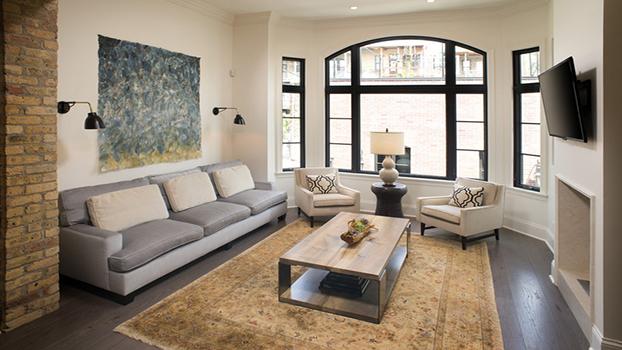Staging isn’t just about decorating. It’s about creating space, highlighting your home’s strengths and appealing to as many buyers as possible.
Despite the positive impact that staging can have on a sale, some sellers remain unconvinced of its importance due to some myths and misconceptions.

If you’re not sold on home staging, read on for the truth behind some of the most common staging myths.
One seller hadn’t made anyhome improvements in 25 years and was dead set on an asking price comparable to those for updated homes in his neighborhood. He wasn’t convinced that landscaping, painting and other staging tacticswould help him achieve his asking price. His home sat on the market for over 6 months before he called for some staging assistance.
Getting top dollar for your home involves pricing it at fair market value and marketing the space properly. But those tasks are tough to accomplish if your home looks rough around the edges. If you’re like the seller who hadn’t made updates in decades, you may not be able to sell your home at all without a makeover.
When you sell your home yourself – making it a FSBO, or for sale by owner – it’s especially important to detach yourself from your home and look at it like a buyer will. After all, you won’t have a real estate agent to give you an objective, informed evaluation of your home’s strengths and weakness. Most buyers are scouring listings online and touring homes frequently, so it’s worth it to do some scouting of your competition to see if your home’s presentation measures up. If it doesn’t, staging might be the only way to get top dollar.
Just like landscaping or renovating, home staging canbe expensive if you have extensive work done. Professional staging fees typically range from $700 to $7,000, depending on the size of your home, how many rooms you stage and whether you rent furniture.
However, hiring a professional isn’t your only option. Many home sellers simply pay a couple hundred dollars for a consultation, which involves a professional stager walking through their home and making recommendations. From there, sellers can declutter, rearrange furniture, paint and add a few accents on their own.
Home staging is likely to be an added cost, but it also adds value to a home. If painting or making some updates seems like too high an expense, buyers may be inclined to think the same thing and offer less for your home than they would otherwise.
This couldn’t be further from the truth. According to the Real Estate Staging Association, only 10% of home buyers can see a home’s potential. This is hardly surprising, as it can be difficult to see past personal items and interior design choices when you walk into a room for the first time.
Staging is the perfect middle ground between an empty home and one that feels lived in. Every action taken during staging is meant to add universal appeal and make it easy for buyers to imagine themselves living there. No matter how well-kept or stylish a home already is, fine-tuning the presentation can increase its value and help attract offers.
Cleaning and organizing play a huge role in staging, but those are just two steps in the process. In many cases, it’s also necessary to make minor repairs, rearrange furnishings, update things like fixtures and flooring, coordinate colors and add accents.
The last thing you want to do is go halfway and leave money on the table. By committing to staging your home – and not just giving it a thorough cleaning – you can leap from presentable to stunning. Follow through on all the little adjustments and best practices that have been proven to impress buyers. When the offers roll in, you’ll be glad you did.
Home decorating is typically a way to express your personality. Home staging is the opposite – a way of depersonalizinga space so buyers can see themselves in it.
That’s not to say that decorating isn’t involved. Furnishings, wall art and accents all play a major role in the staging process. The difference is that you’re decorating for the masses instead of yourself. Design choices should typically be modern and understated, with a few pops of color to keep things interesting. Try not to distract buyers from your home’s strengths, but don’t drain all the life out of the environment, either. Imagine a classy lobby or a hotel room as a starting point.
If you’ve done a good job maintaining and updating your home over the years, you have a head-start on getting your home ready to sell. But in most cases, even well-kept homes can benefit from some adjustments.
Before you list your home for sale, read up on the latest design trends and consider consulting with a professional stager for help with marketing your home.
You should learn a few tricks to impress buyers and give yourself a better chance of getting top dollar.
Tori Toth is a Certified Home Staging Expert, Regional Vice President for Real Estate Staging Association and owner of Stylish Stagers Inc. She has been interviewed on CNN Money and was named a Professional Stager of the Year Finalist in 2012. Learn more about Tori and her Stage 2 Sell Strategy at www.toritoth.com